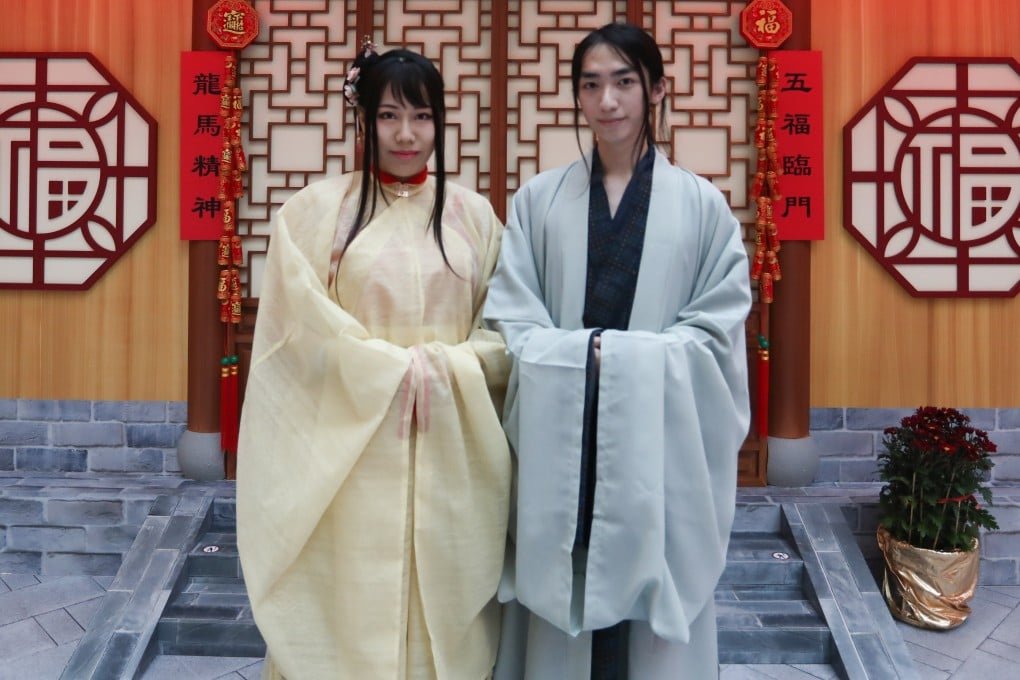Hanfu, traditional Chinese clothing, and the young people in Hong Kong reviving it
- Veronica Kam wears traditional hanfu clothes whether she’s relaxing at home, shopping, eating with friends or working
- She is part of Hong Kong’s hanfu movement which aims to revive the ancient clothing traditionally worn by China’s dominant Han ethnicity

With ornate pins in her hair and wearing a long flowing robe with sweeping sleeves over a heavily embroidered gold and purple silk skirt, Veronica Kam Pui-ka blends in nicely at West Kowloon’s Olympian City 2 where a 4,000 square foot (370 square metre) space has been transformed into a street scene straight out of ancient China.
Dressing in traditional outfits during Lunar New Year celebrations is not unusual. What is unusual, however, is that Kam wears traditional clothes all year round, whether she’s relaxing at home, shopping, eating with friends or working. “I’ve loved traditional Chinese clothing since I was a child and have always been fascinated by its beauty,” says the 30-year-old. “My wardrobe is 90 per cent hanfu.”
Kam is part of the hanfu movement, a revival of the ancient clothing traditionally worn by China’s dominant Han ethnicity (Han make up 91.6 per cent of the country’s 1.39 billion population, according to the CIA World Factbook).
The movement started 20 years ago in China and is a growing business. According to the China Daily, the hanfu industry was worth about US$156 million in 2019. It now has devotees around the world, including in Hong Kong, best seen through the Hanfuhk Instagram account.
Defining hanfu is complicated as it’s associated with different styles from different time periods – some of the most popular are from the Ming, Song and Tang dynasties. Embracing it at a time when relations between Hong Kong and Beijing are strained also make it controversial. But Kam says she’s making a fashion statement, not a political one.
“For me it’s about the weaving technology used in the various fabrics and the significance of traditional patterns,” says Kam, who is also studying Traditional Chinese Medicine at the University of Hong Kong (HKU).